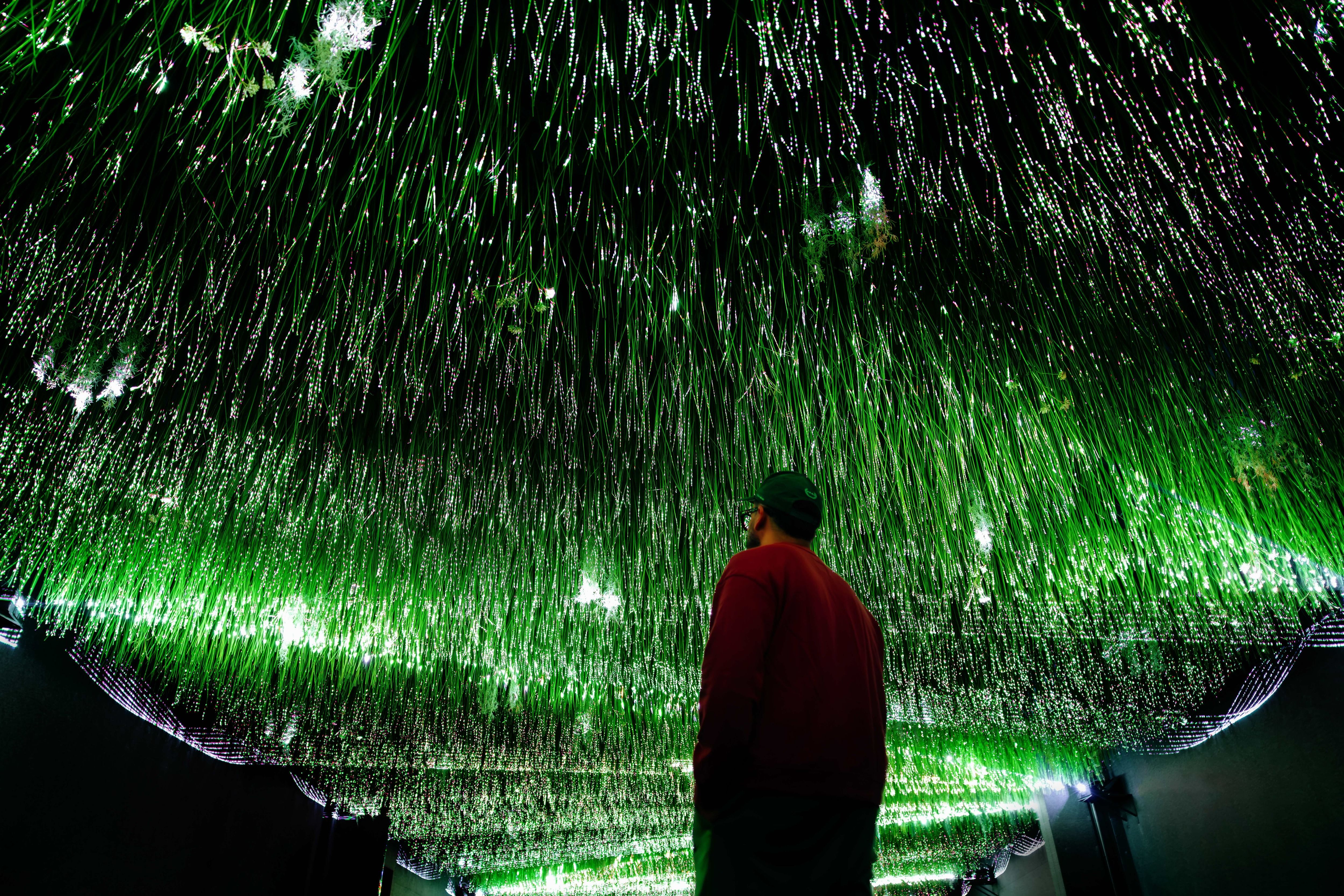Sculpture, Myth and Octopi Intersect at Guerrero-Projects
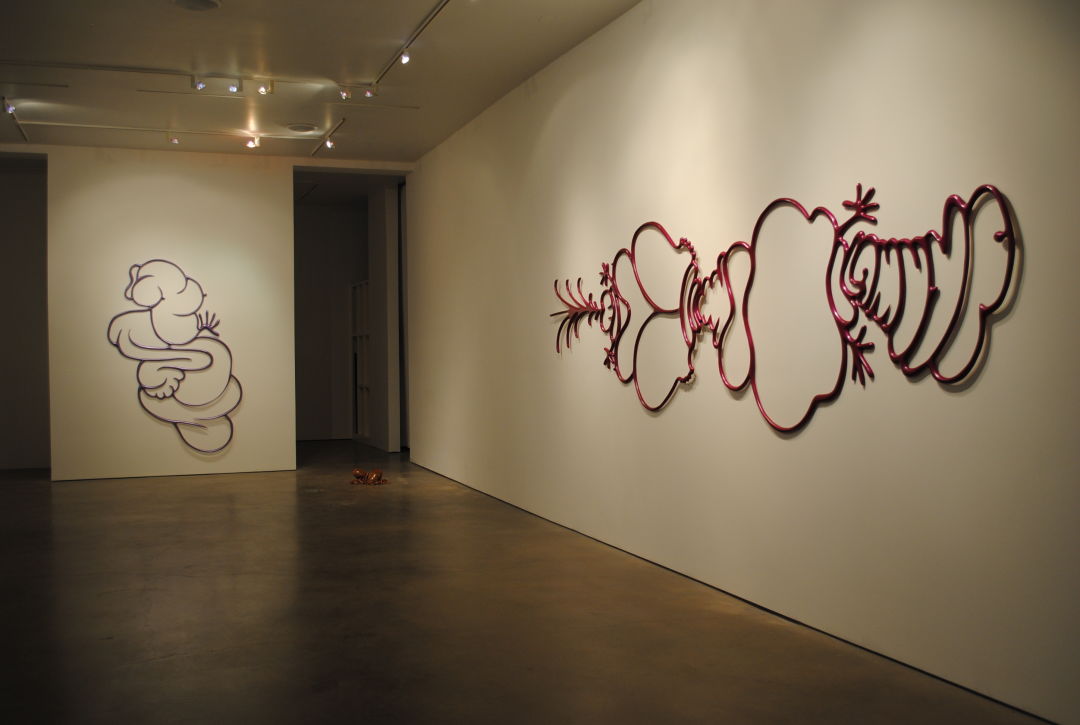
Walking into Guerrero-Projects, I was struck by all my failed flings and friendships, whether toxic or amicable, covering the gallery walls. And that’s probably the intended reaction to the new exhibition by Mexican artist Miguel Ángel Madrigal, Del Porqué Estamos Juntos (Because We Are Together), where sculpture explores human relationships.
The show is Madrigal’s riff on Plato’s ancient Myth of Aristophanes, in which humans were once singularly half-male and half-female, with two faces, four hands and both sets of genitalia. In that myth, the Greek gods, threatened by our unity and perfection, decided to split humans in two—male and female—to diminish their power. Del Porqué Estamos Juntos meditates on the lingering effects of that split, attempting to formalize the inexplicable connection between lovers. Madrigal’s work spectacularly demonstrates how that elemental pull toward another person is molecular, animalistic—human.
His large sculptures, Relaciones Simbioticas (Symbiotic Relationships), are constructed from enamel and MDF, or medium density fiberboard, and take shape as outlines of bizarre biological creatures reminiscent of the chestbusters from Alien. They sprawl across the walls in harmony, like living, pulsating blobs tangled in erotic embrace.
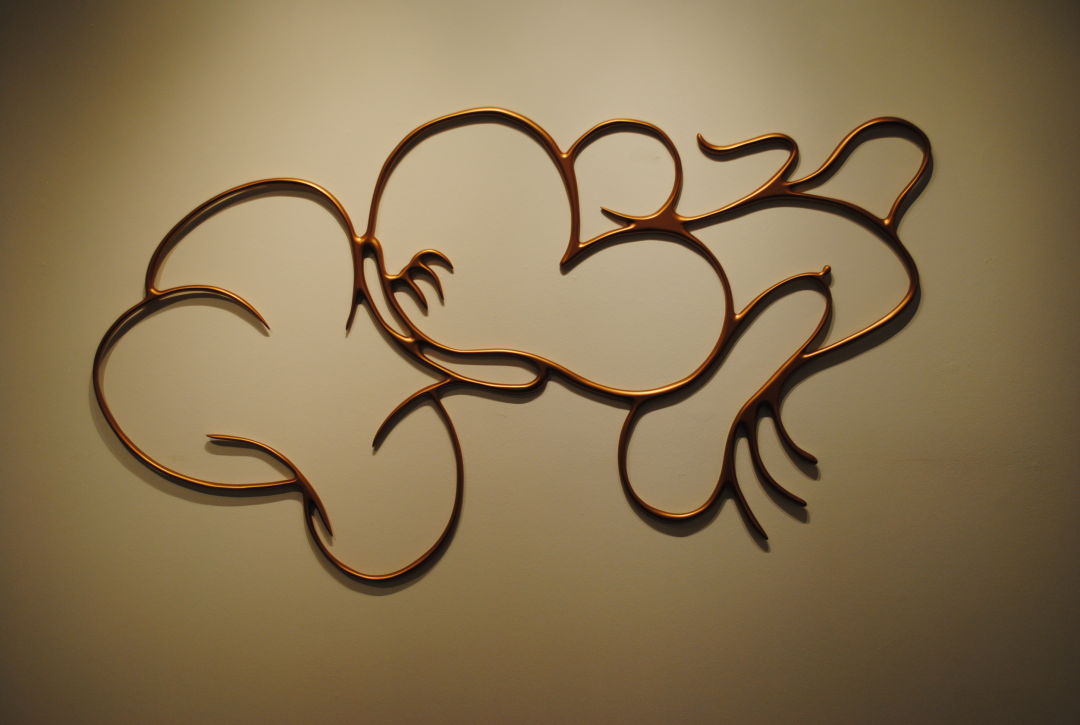
Initially, I was disgusted—not just by not just the coldness of the materials but by my projected nightmare. Yet when Madrigal described the physical process of his art, I felt empowered by the way it reflected my own relationships. “After many years using plastic as an art,” he told me, “I’ve studied the relationship that exists between two objects that meet, in a symbiotic narrative and even in a parasitic way.” By sculpting these creatures, he provides a physical reminder of the give and take of human connection, one that would probably excite Bill Nye, The Science Guy with its acknowledgment of the symbiosis at the core of everything.
That brings us to the octopi locked together in pairs, clinging to the walls and suctioned to the concrete floor. I urge you to inspect these creatures closely; it’s subtle, and I wouldn’t have found out if not for the gallery assistant, Tere Garcia, coyly whispering it to me, but the series of sculptures, Uno solo (Only One), have nipples atop their heads. The body of each octopus, I learned, was formed from the mold of a woman’s breast.
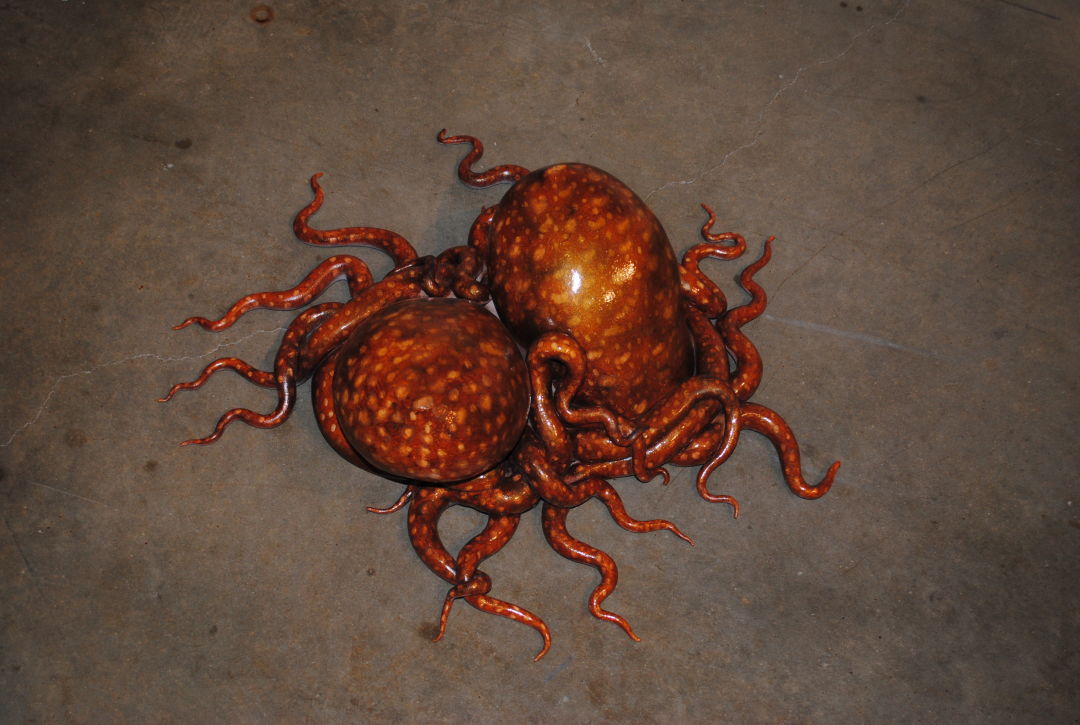
The creatures are a nod to Hokusai’s The Dream of the Fisherman’s Wife, a notorious woodblock print of a woman’s intimate relationship with an octopus. Madrigal says the “erotic” and “Siamese” encounter of each pair is fairly obvious, but he was also inspired by how octopi possess two hearts in one body. The cephalopods are inseparable, perhaps to remind us of our ability to exist in union, both physically and emotionally.
Madrigal’s final piece, Como Estar Juntos I (How to be Together I), is a series of laser cut wood magnets arranged on a steel backdrop—a massive, reflective board with geometric puzzle pieces laid out in no particular order. Although not meant to be interactive, the magnetic pieces can be moved around and connect at any end. They’re like atoms, bringing Madrigal’s study of attraction down to the microscopic level.
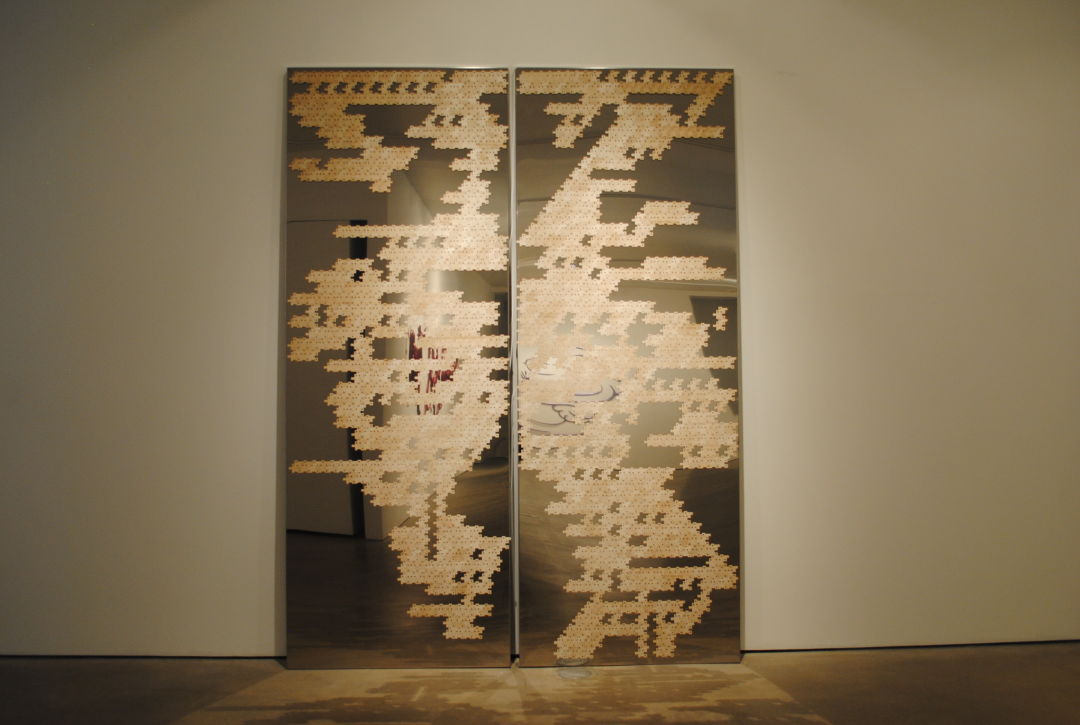
Although the exhibition's time in Houston is limited, it won't be your final opportunity to see the work—Madrigal plans to continue his investigation into love and symbiosis with an exhibition in September at the Enrique Guerrero Gallery, overseen by the same owner as Houston's Guerrero-Projects, in Mexico City.
Thru Sept. 2. Guerrero-Projects, 4411 Montrose Blvd. Suite C. 713-522-0686. More info at guerrero-projects.com.
